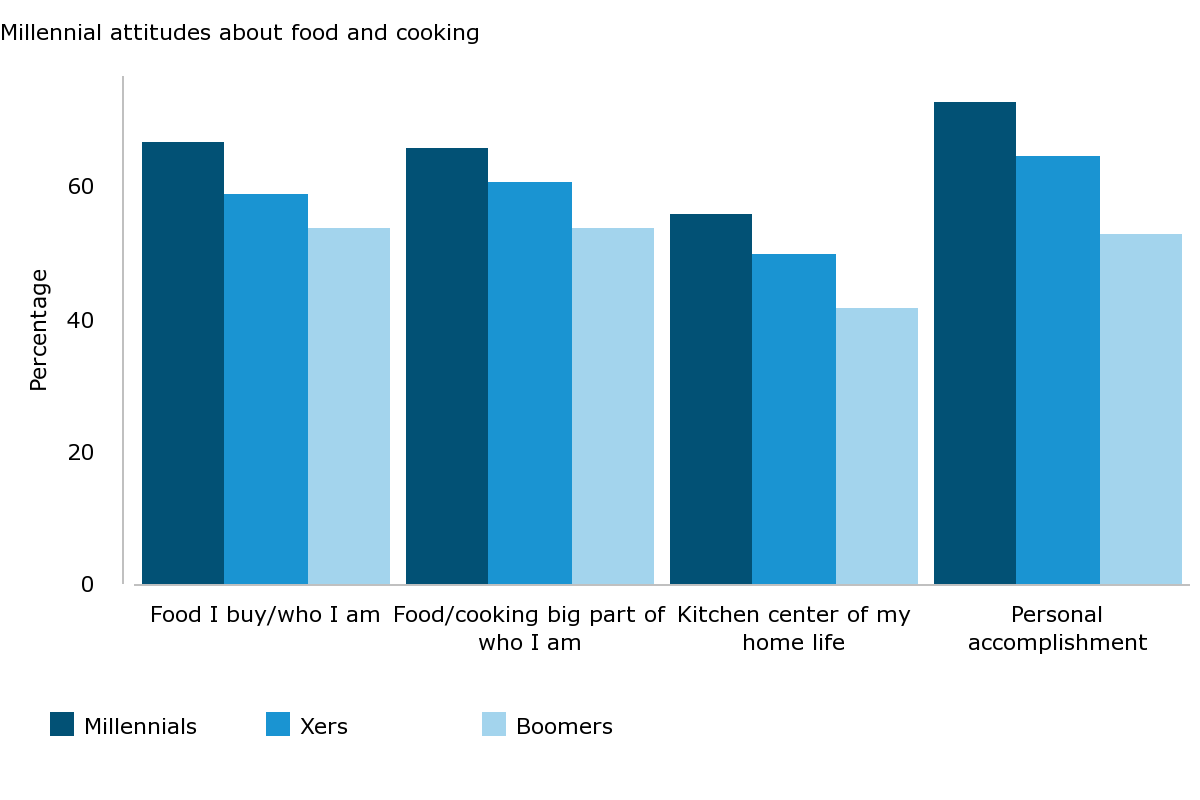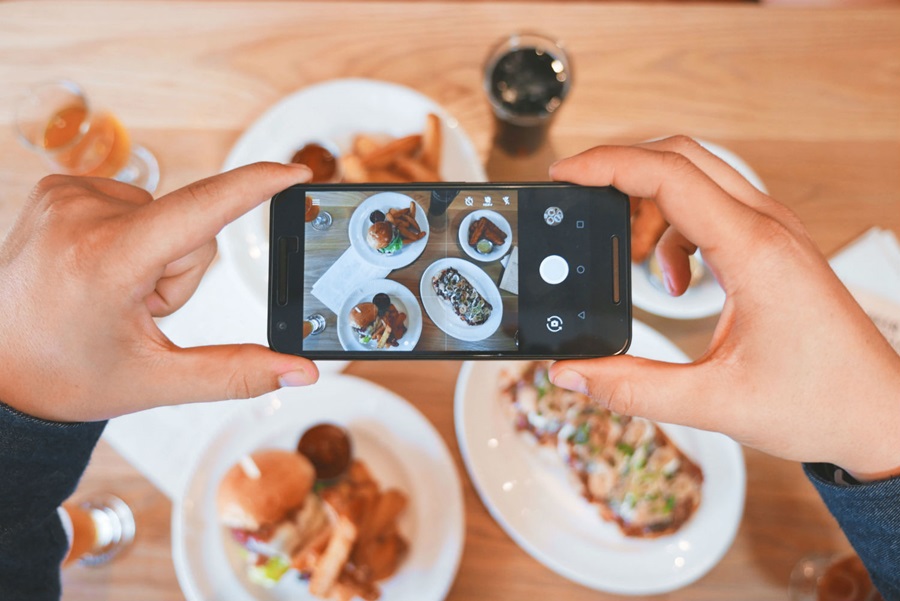“You are what you eat” has never been truer for Millennials, whose love affair with all things culinary is a sign of the times. Food is increasingly a key component of identity for a generation that’s had to find more feasible and functional status symbols than those of previous cohorts.

Stronger majorities of Millennials than Xers or Boomers agree (see chart above):
- “The food I buy says a lot about who I am as a person" (67% versus 59% and 54%, respectively)
- “When I think about my life, food/cooking is a big part of who I am" (66% versus 61% and 54%)
- “The kitchen is the center of my home life" (56% versus 50% and 42%)
- “Learning to cook new dishes or cuisines is a personal accomplishment that is important to me" (73% versus 65% and 53%)
What’s changing?
The centrality of food in Millennial lifestyles is an allegory of this generation’s central dynamic tension—the collision of great expectations with contracting opportunities. Faced with limited access to their predecessors’ traditional aspirational markers of the good life, Millennials have adopted other signs of success and accomplishment. Sure, Millennials’ so-called obsession with food reveals their experience- and sensation-seeking nature. And yes, it illustrates the generation’s growing cultural openness. And of course, it intimates a kind of communitarian yearning that characterizes the cohort. But it also says something more incisive.
Stagnant wages, mounting debt, employment woes and the Great Recession were for Millennials a far cry indeed from the land of plenty promised by Boomer parents raising them amid a time of unprecedented prosperity. And so with fewer resource at their disposal and fewer opportunities within easy reach, Millennials have had to recalibrate the very nature of their aspirations. A telling outgrowth of this expectations gap is the elevation of sustenance into status.
KEY NUMBERS
74% of Millennials “often pay more for food that has the best taste/quality”
Look no further than social networks for evidence of the cachet that food carries among Millennials. The food photo has become a cultural phenomenon and a new kind of status marker. Eve Turow, author of A Taste of a Generation: How the Millennial Generation’s Love for Organic Fare, Celebrity Chefs, and Microbrews Will Make or Break the Future of Food, says Millennials are “using organic kale as an identifier… As a signal of education, of knowledge, of income.”
And with status comes stress. Four in 10 Millennials agree that “preparing and cooking food stresses me out,” compared with 30% of Xers and 20% of Boomers (source: Kantar Consulting). While this could be due in part to older consumers’ established experience in the kitchen, viewing this from the vantage point of “food as lifestyle” brings this insight into better relief: when food is an important communicator of savvy and status, overcooking the chicken becomes a more profound kind of failure. Millennials may not see brands as a status badge like prior generations, but they are not immune to what others think about their experiential status markers.
But beyond the 177 million photos on Instagram hashtagged with #food (or the 79 million more tagged with #foodporn), and beyond the 63% of people under 32 who have posted a picture of their food or drink on social media, food gets Millennials to spend. And when they do, it’s often with an eye for quality over value or price. In a world of contracted possibilities, Millennials see splurging on good food as a practical, justifiable form of luxury.
The story of Millennials and food brings a bounty of brand opportunities. Millennials’ relationship with food amplifies the role of sensory stimulation, experiential experimentation and community and personal brand-building. But more importantly, it also helps brands understand that for a generation at the intersection of big dreams and small victories, aspirations are a moveable feast.
Profiting from change
Make it “statusfying”. Food is not at the center of the Millennial foodie lifestyle, and brands well outside of the food category can benefit from understanding that at its core, it is instead about remodeled aspirations. Using food as a critical building block of one’s personal brand and as an outlet for lifestyle indulgence helps brands understand that Millennials are still highly aspirational, and that despite living in a world of contracted possibilities, they are creating a version of the good life using those ingredients within reach.
Connect with hearts through stomachs. All brands, inside and outside of the food category, can better understand Millennial consumers through the “food as lifestyle” prism; their preferences in this one category have implications for all categories. Namely that they crave sensory stimulation, something virtually all brands can bring more of to their product or service experience. They actively seek exposure to cultural diversity, something that should empower brands to continue pushing the boundaries of polyculturalism. And they can and will prioritize quality over price or value, something that should embolden brands outside of the food category to entice Millennial spending.
Embrace status-seeking. Marketers shouldn’t mistake Millennials’ preference for experiences as a rejection of traditional social class and status distinctions. When Millennials place greater stock in more attainable aspirations rather than out-of-reach ones, those new signs of accomplishment take on additional significance and weight. As a result, they can also become more stressful, suggesting that Millennials still want others to acknowledge and even envy their personal brand, even when it is burnished by more modest markers of success.


